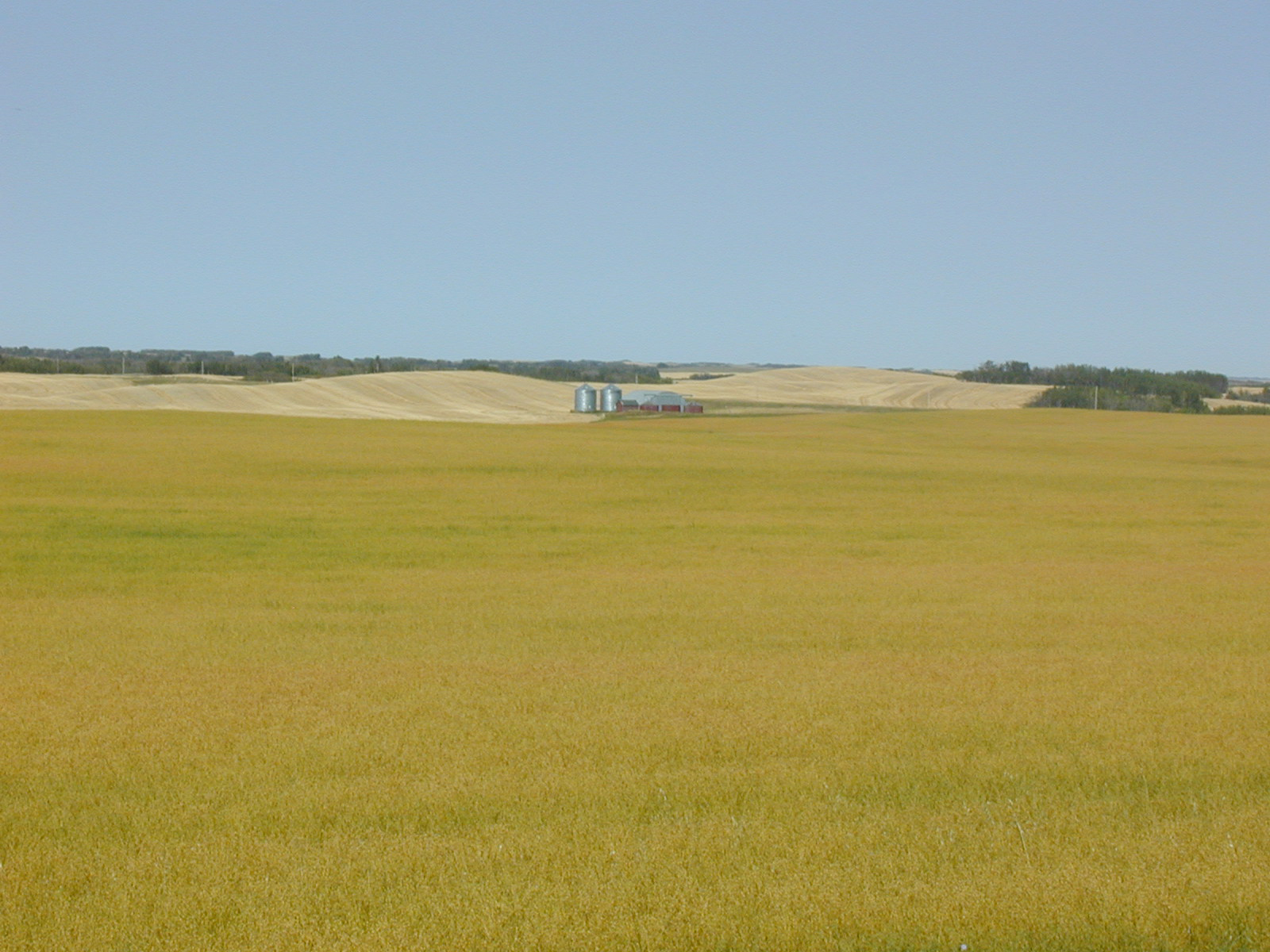
The far reaching impact of the CDC
Teaching, extension and long-lasting relationships
By Kathy FitzpatrickMore than 500 registered crop varieties in 50 years. That alone is an admirable record for USask’s Crop Development Centre (CDC). But by far, it’s not all the CDC has to show for a half-century of service. Also count in the expertise passed on: grad students trained; scientific papers and books published; farmers and other agriculture and food industry players educated through extension activities. Among faculty honoured for this knowledge transfer is cereal and flax pathologist Dr. Randy Kutcher (PhD), recipient of an
Award of Merit from the North American Colleges and Teachers of Agriculture in 2020.
For some trainees, their experience evolved into a lasting professional association with the CDC. “It’s been twenty-five years of me having the great opportunity to work with that organization,” said alumnus Bill Greuel.
To date, nearly 300 students have pursued graduate degrees in connection with the CDC. Many have landed leading roles in government, industry and academia.
In fact, the CDC has produced a multi-generational chain of wheat breeders. Dr Bob Baker (PhD), who arrived in the late 1970’s, trained Dr. Pierre Hucl (PhD) (who recently served as interim CDC Director). Hucl in turn mentored Dr. Curtis Pozniak (PhD), current CDC Director.

Other current faculty who came up through graduate student ranks include Dr. Randy Kutcher (PhD) (cereal and flax pathologist), Dr. Tom Warkentin (PhD) (field pea and soybean breeder), and Dr, Aaron Beattie (PhD) (feed and malt barley and oat breeder). Dr. Bert Vandenberg (PhD), a lentil and faba bean breeder was trained by the legendary pulse breeder Dr. Al Slinkard (PhD). And Kirk Blomquist, field superintendent since 1994, landed the job while working on his MSc under the supervision of feed barley and oat breeder Dr. Brian Rossnagel (PhD). Both men grew up on prairie farms (Rossnagel in Manitoba, Blomquist near Perdue, SK), and became life-long friends. “Even today Brian and I are in frequent contact,” said Blomquist, who still occasionally seeks Rossnagel’s advice.
Another of Baker’s students, Stanford Blade (MSc Crop Science ’87) became Dean of Agricultural, Life and Environmental Sciences at the University of Alberta. The University of Manitoba’s Plant Science faculty includes two former students of now-retired winter wheat breeder Dr. D. Brian Fowler (PhD), Dr. Anita Brule-Babel (PhD) and Dr. Martin Entz (PhD).
Entz’s work focuses on natural systems agriculture. He said he gained the confidence to step into an area which he describes as “not well supported” after seeing the “can-do” attitude within the CDC, in particular Fowler’s risk-taking work on cold hardiness in winter wheat.
“I think the fact that I was working in a field that was emerging and had many, many problems but we kept trying and we didn’t give up, that was a very important lesson. And that has inspired me,” Entz said. To him, Fowler was “a very patient but very wise mentor” whose determination has continued to guide him.
The appeal of working with Fowler - and the quality of the people at the CDC in general - drew Entz to pursue his PhD there. It was a sharp turn in his career path. Having obtained a Master’s degree in horticulture, Entz had been working as an agronomist in the sugar beet industry. He had considered doing his PhD on sugar beet weed control at Colorado State University. However, he then thought that if he was going to work in Canada, he should know something about wheat. His eyes turned to the University of Saskatchewan.

Entz was impressed by the work he saw, “on practical problems that meant something to society, to farmers, to the environment.” It mirrored his own ambitions, to work in a field that had some practical application “but was applying the best possible science to that.”
Entz also believes his time at the CDC made him more versatile because “we weren’t just focusing on the breeding program.” He speaks with admiration for not only Fowler, but also Fowler’s close collaborator Dr. Larry Gusta (PhD), “a world-class cold acclimation physiologist.” Entz’s PhD work focused on drought stress
physiology.
In the years he was there (1984-88), Entz considered the CDC unique in Canada by virtue of its size. Being so well-resourced “gave it the critical mass that made it really special.” Not that the facilities were quite so impressive back then. Although he and his colleagues worked out of Atco trailers, Entz said he loved being there because what mattered were the people, their spirit and “the questions we were addressing.”
The CDC attracted numerous graduate students from across Canada with whom Entz created lasting relationships. They are now all over the world, Entz said, creating a valuable network for him that he otherwise would not have had.
Greuel earned his MSc at USask under the supervision of former CDC Director Dr. Bryan Harvey (PhD), himself a world renowned malt barley breeder who brought early success to the organization. “My career has intersected with the Crop Development Centre ever since,” Greuel said.
After first working in the private sector, Greuel progressed through a series of roles in the Saskatchewan Ministry of Agriculture, culminating with Assistant Deputy Minister, Regulatory and Innovation. In that time, Greuel had a direct hand in administering core funding for the CDC.
He also spent time at the agricultural giant BASF, where he managed the commercial arrangement with the CDC for the development of herbicide-tolerant lentil and wheat.
Greuel now leads the development of Canada’s plant protein sector, as CEO of Protein Industries Canada, an industry-led, not-for-profit organization based in Regina. There, too, he finds connection with the CDC, where research into the production and use of plant protein figures prominently.
Greuel’s arrival at the CDC illustrates its particular strength in collaborating with the private sector. Just finishing his undergraduate degree in agricultural biology, Greuel seized a sudden and unexpected opportunity he heard about. His brother, who was pursuing his Master’s in agricultural economics, had attended a seminar in the College of Agriculture given by Tom Schuler of Plant Genetic Systems. At the time it was a small startup company based in Belgium that went on to start the hybrid canola industry in Canada. Schuler commented on the need for more private sector investment in plant breeding, and said he had money to support a graduate student if he could find the right person.
The next day Bill Greuel called Schuler. They put together a project concept and pitched it to the Department of Plant Sciences. It led to what Greuel describes as a very unique arrangement at the time: working for a private sector company but doing his research under the guidance of professors in the department.
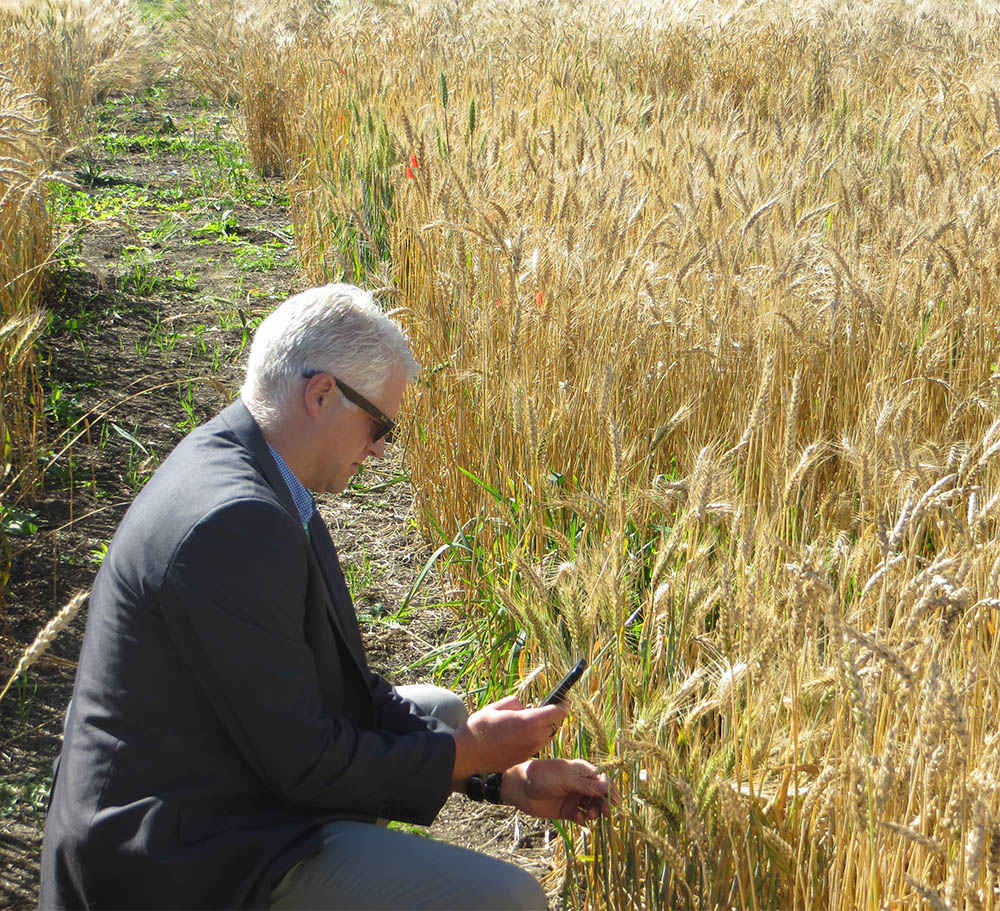
“Here comes this kid just finishing off his undergraduate degree, with an Industry partner and they were completely open to that arrangement.” Greuel’s graduate work was in hybrid canola seed production.
Although no one at the CDC was working in canola, Harvey had done some of his own undergraduate and graduate work in that area. Hence, he was able to guide Greuel’s research with a depth of knowledge and understanding of both the plant genetics and the industry.
Greuel also counts among his mentors Dr. Graham Scoles (PhD) in Plant Sciences, and Baker. Greuel said Baker in particular taught him how to craft research design, and also the importance of correlating lab and field results to understand what is happening in the production environment.
The many other accomplished and influential CDC alumni include several at Agriculture and Agri-Food Canada (AAFC). Dr. Rob Graf (PhD), who earned his PhD in Plant Breeding and Agronomy under the supervision of Dr. Gordon Rowland (PhD), is Principal Research Scientist in winter wheat breeding at AAFC’s Research and Development Centre in Lethbridge, AB. At the same facility, Dr. Parthiba Balasubramanian (PhD) is a research scientist in dry bean breeding. Earlier, he arrived from India with a BSc in Agriculture and obtained both his MSc and PhD in Plant Breeding at USask. Meanwhile, at the parallel facility in Brandon, MB Dr. Kirby Nilsen (PhD) heads the oat breeding program.
A strong rapport between Nilsen and his supervisor at the CDC launched him on the path to his current position. Nilsen completed both his Master’s and PhD degrees in Plant Sciences at USask under the supervision of Pozniak before going on to work as an assistant plant breeder at the CDC. Nilsen had always been interested in plant breeding, he said, having earlier worked in a couple of plant breeding programs in private industry. But his career choice was firmly set while, pursuing his BSc in Agricultural Biology, he took a fourth year course in plant breeding with Pozniak. The two hit it off, engaging in discussions during and after class. “I recognized the passion that he has for what he does as a plant breeder, and I think some of that probably rubbed off on me,” Nilsen said.
Originally from Saskatoon, Nilsen said USask will always bedifficult one. A major factor is that his wife is from Manitoba, and farms there with her family. He initially obtained a position in wheat phenomics. Phenomics uses technologies such as robotics and aerial drone imaging to collect data in the field. The information is used to assist in making selections for plant breeding. When the oat-breeding position opened up, Nilsen went for it.
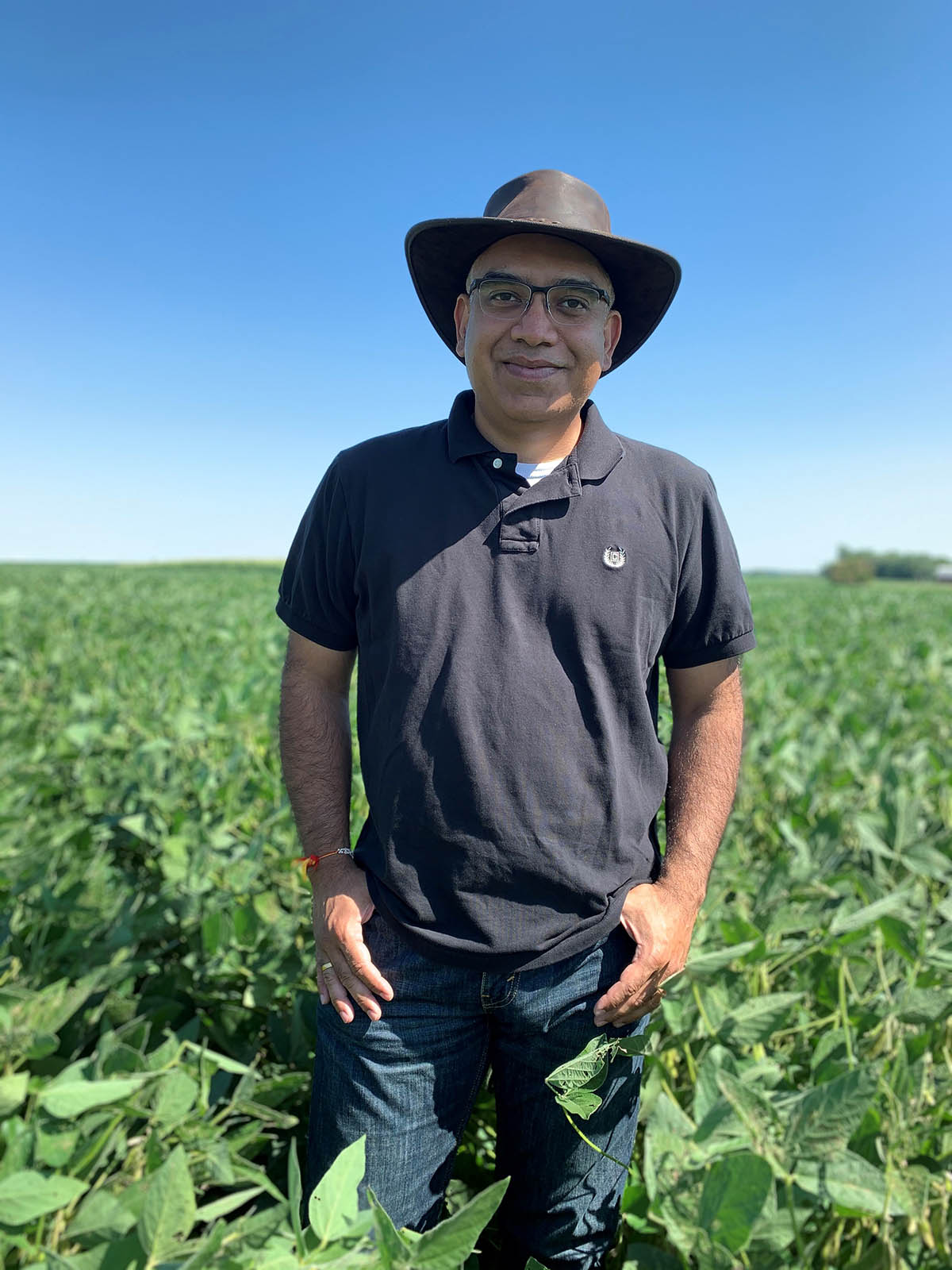
CDC alumni can also be found beyond Canada’s borders. For example, Dr. Asheesh (Danny) Singh (PhD) is now a Professor of Agronomy at Iowa State University. After first earning his Bachelor’s degree in agriculture and animal husbandry in India, Singh obtained his Master’s degree at USask under Rossnagel’s supervision, before completing his PhD at the University of Guelph and then spending six years as a wheat breeder at AAFC.
In Indiana, Dr. Lasantha Ubayasena (PhD) has recently joined the plant breeding technology company Inari Agriculture as a Senior Research Scientist. There, he is leading the establishment of Molecular Breeding and Genotyping activities to support the company’s growing precision breeding programs with their proprietary gene editing technologies. Previously at Corteva Agriscience in Johnston, Iowa, Lasantha Ubayasena led the development and implementation of next generation genotyping technologies to support genomic breeding and trait introgression programs.
Back in early 2000, a mix of risk-taking and good fortune landed Ubayasena at the CDC. Nothing had been arranged in advance of his arrival in Saskatoon from his home country, Sri Lanka, with family in tow. He had simply heard about the local scene from friends who studied in the Department of Plant Sciences.
Keenly interested and knowledgeable in the use of molecular markers in plant breeding, “I came with that mission” he said. He arrived at a time when the technology was gaining momentum at the CDC.
Ubayasena had already earned his undergraduate degree in agriculture. That was followed by eight years as a research officer in genetics and plant breeding at Sri Lanka’s Sugarcane Research Institute, where his work included the initiation of molecular marker development to support the conventional breeding program.
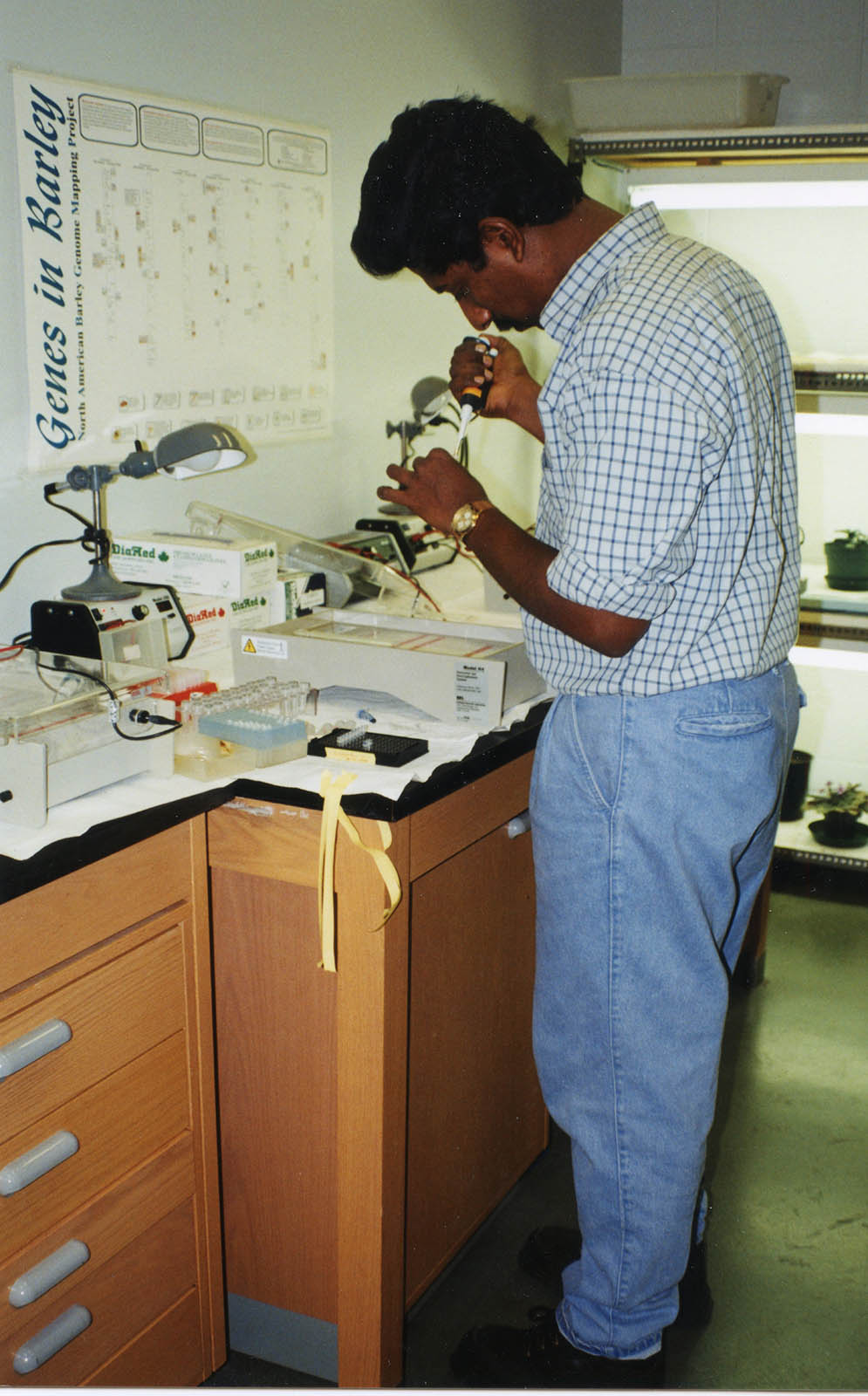
It took him only a few days after landing in Saskatoon to find a job as research assistant to Scoles and Dr. Branka Barl (PhD) in their Crop Molecular Genetics Laboratory. He then got funding to do his Master’s degree under their supervision. Following work at AAFC, Ubayasena returned to Scoles’ lab to work on a project funded by Genome Prairie.
He then seized an opportunity to do his PhD under the supervision of Warkentin, whom he calls “one of the best” pulse crop breeders. Ubayasena said it was then that he put together plant breeding and molecular technologies. While writing his thesis, he went to work for Dow AgroSciences in Saskatoon, where he contributed to molecular marker development, process improvement and high throughput marker analysis in canola. Ubayasena’s work with molecular markers continued at Dow’s head office in Indianapolis. Corteva, where he subsequently worked, is a standalone spinoff of DowDuPont, itself the product of a corporate merger.
His studies with Warkentin stood him in good stead at Corteva. Describing himself as a “lab rat” for his long hours spent in that setting, Ubayasena’s time at the CDC gave him the chance to learn about evaluating cultivars in the field. At Corteva, he had to work closely with both plant breeders and lab staff. “I have a really good understanding of both sides,” he said.
Ubayasena also praises CDC faculty and staff for the personal support they gave him and his family after coming to Saskatoon. “We were struggling from every angle” as they established themselves in a new country, he explained.
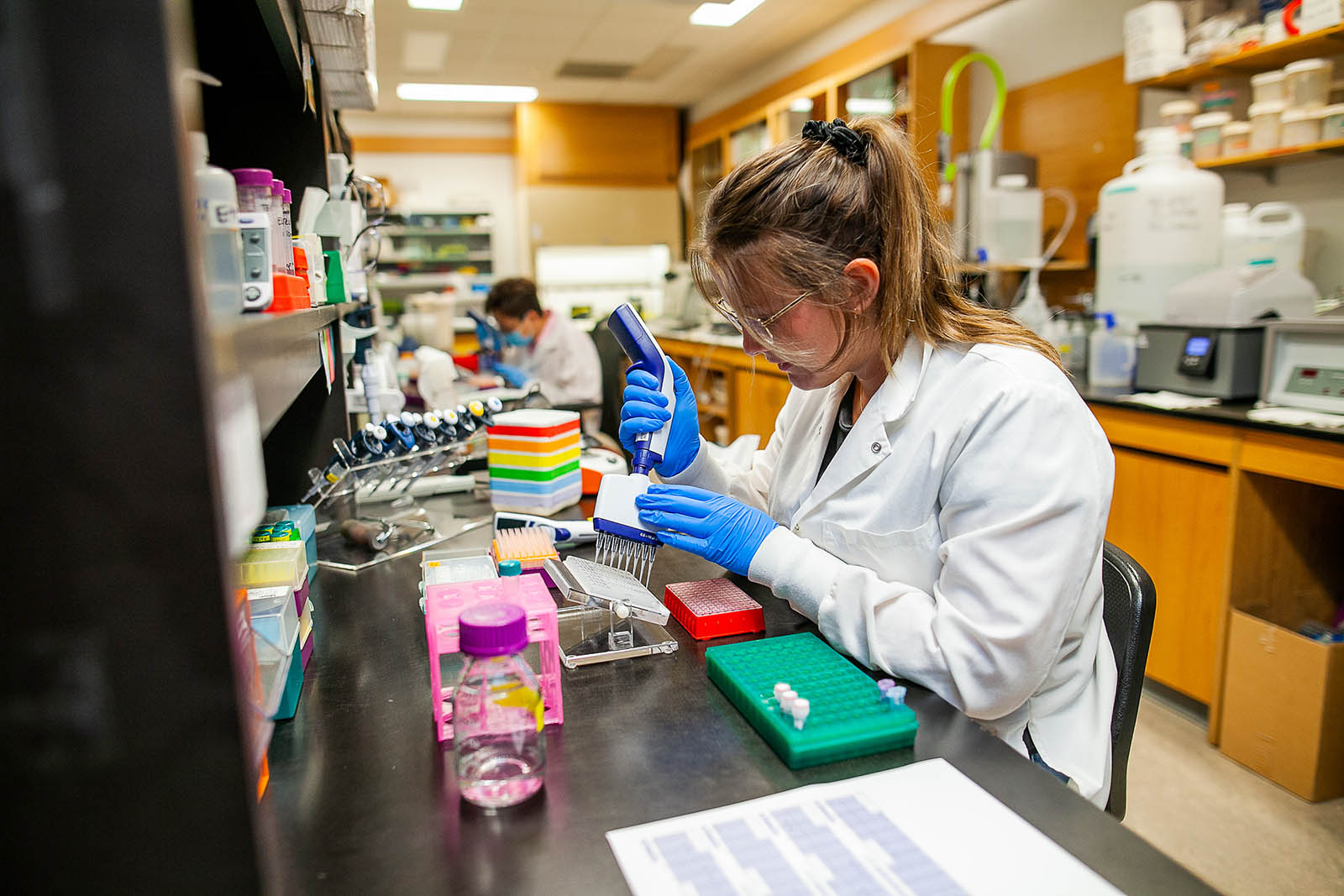
In reaching out to farmers, the tradition goes back to Slinkard’s early days when he crisscrossed Saskatchewan explaining why they should include pulses in their rotations. “We still see that today with breeders and pathologists at the U of S speaking at grower and SPG-hosted events,” said Carl Potts, Executive Director of Saskatchewan Pulse Growers. The pulse industry appreciates not only the work done to develop new varieties, but also the knowledge imparted on how to best produce them.
Of course, producers of the full range of crops developed by the CDC - along with students and other agricultural scientists across the globe – receive the benefit of knowledge acquired. In 2019-20 alone, faculty engaged in more than 150 outreach and extension activities such as meetings and conferences, presentations, lectures and seminars, field and program tours, and media interviews. Meanwhile, knowledge shared in written form is just as prolific: 97 conference publications and 65 peer-reviewed papers in that same year.
Now, as the CDC enters its sixth decade, the work of developing the crops of the future continues. Among the highlights: Pozniak, together with Dr. Sylvie Cloutier (PhD) at AAFC, are leading the $11.2 million 4DWheat project, named for its application of cutting-edge genomics to harness diversity, advance domestication, enable discovery and expedite delivery of new sources of genetic variation.
As lead funder Genome Canada notes, wheat supplies the most calories and proteins to the world’s people, but current yield gains will not meet the needs of a growing global population. One possible reason that yield increases are starting to plateau, Pozniak explained, is that genetic diversity has narrowed – wheat breeders are using similar germ plasm over and over again.
The 4DWheat team hopes to tap into some of the diversity that has either been lost or gone unused in breeding, stored in a treasure trove of about half a million different accessions of wheat relatives in gene banks around the world. The challenge is, separating the highly valued traits from the undesirable (such as shattering seeds, tall growth or very late maturity). Genomics will be used to efficiently identify desired traits to be bred into new, higher yielding and more disease-resistant wheat varieties.
Meanwhile, pulse breeders Kirstin Bett and Bert Vandenberg are using genomics to accelerate the development of new lentil varieties that will be highly competitive in the global market. Bett and Vandenberg earlier co-led a project to identify which varieties will best perform in new growing areas – vital intelligence in the effort to boost production world-wide.
Now they co-lead the $7.4 million project called EVOLVES (Enhancing the Value of Lentil Variation for Ecosystem Survival). The aim is to tailor-make lentil varieties with quality traits such as size and colour that meet the demand of specialty processors such as the pasta industry - varieties more likely to command a premium price.
Disease resistance is a recurring theme in the work of CDC pulse breeders, often in collaboration with their plant pathologist colleagues. For instance, Bunyamin Tar’an is working on high yielding chickpea cultivars with such traits as improved resistance to ascochyta blight. He is conducting disease screening in collaboration with pulse pathologist Sabine Banniza.
Similarly, through resistance screening of germplasm – including wild relatives of cultivated lentil in particular – Banniza’s team has identified resistance to root rot in lentil. Together with Tom Warkentin, the pea breeder at CDC, she recently developed a marker-assisted platform to breed resistance to Aphanomyces euteiches (a water mould which causes root rot) into high-yielding pea varieties. She hopes to do the same in lentil.
In fact, Banniza has shifted focus from earlier work on diseases affecting the leaves of pulse crops to root rot pathogens. In recent years, her team has contributed to research led by colleagues at AAFC to identify ways to control Aphanomyces root rot on the prairies which, as she wrote, “has developed into the most
threatening disease at present.” Further, along with provincial collaborators, her team is currently surveying pathogens on chickpea roots from commercial fields in Saskatchewan “as root rots are becoming an emerging issue in this crop too.”
Still, work continues on an important pathogen causing fungal lesions on lentil leaves, Colletotrichum lentis. Banniza’s team has sequenced its genome, and is estimating the risk that new races may develop. She hopes to “gain more detailed insight into the genes that are activated when this pathogen infects lentil, which could then be targeted through breeding in a very specific way to improve resistance.”
The cereal crop diseases Fusarium head blight (FHB) and wheat stripe rust remain high priorities for Kutcher. A genome-wide association study will identify markers linked to FHB resistance in wheat. Kutcher is also studying the benefits of integrated pest management on FHB, such as inclusion of non-host crops (such as pulses, oilseeds and corn) in rotations, and determining the most effective fungicide management strategies for FHB mitigation in wheat and pasmo in flax.
Meanwhile, work to identify stripe rust resistance genes will aid in the development of new wheat cultivars, potentially minimizing the use of fungicides and saving millions of dollars for western Canadian growers. As well, new diseases, such as bacterial leaf streak of wheat and barley require attention to minimize their establishment across the prairies and determine appropriate management practices should they become established.
For Warkentin, resistance to powdery mildew, the ascochyta blight complex, root rot and lodging remain preoccupations as he develops high yielding pea cultivars. He is also engaged in collaborative research to breed enhanced resistance to environmental stresses, particularly heat and drought. And, he is working on lines with improved nitrogen fixation, an important process in plant growth.
In soybeans, Warkentin is working on high-yield cultivars with acceptable disease and insect resistance for western Canadian conditions, along with acceptable protein and oil composition. Nutrition is also the focus of two of Warkentin’s current projects. One aims to boost the bioavailability (active effect after ingestion) of iron in field peas. The other involves the study of pea varieties for indicators of glycemic index, a measure of how quickly or slowly a food releases glucose into the bloodstream, important for people with diabetes in particular. Molecular markers associated with low glycemic index may be developed, which will facilitate breeding for this trait. He is also collaborating with Tar’an in a five-year project to improve yellow pea protein concentration and quality.
Tar’an’s other work on chickpeas focuses on resistance to herbicides, as well as improved adaptation and yield in suboptimal environments. The latter involves the introgression of traits from wild chickpea.
Meanwhile, Beattie is working on molecular markers linked to oat crown rust. In his barley breeding program, he’s working on new two-row malting barleys with improved agronomic, disease and quality attributes to meet the needs of producers and the malting and brewing industries, including the expanding craft segment. His focus on improved agronomic and disease attributes carries through to two-row feed barley and hulless food and malting varieties. A new area is coloured food types. For the beef and dairy sectors as well, Beattie is working on improved quality in forage barley and oat such as higher protein, starch, digestibility and dry matter yield.
Forage breeder Bill Biligetu is working as well on improved yield, nutritional profile and adaptation. In genomics, he is testing to see genomic selection can significantly improve genetic gain in alfalfa breeding, part of the effort to increase production and use of this forage plant in Canada, including in high saline soil areas. And, working with Dr. Andrew Sharpe (PhD)(Director of Genomics and Bioinformatics at USask’s Global Institute for Food Security), Biligetu is building a catalogue of genetic information for bromegrass species. Other projects include development of: meadow brome and cicer milkvetch varieties for stockpiled grazing in western Canada; hybrid wheatgrass for salt tolerance; and wheatgrass varieties for improved drought tolerance, and resilience.

Meanwhile, Hucl is leading the development of forage wheat, an effort Biligetu has collaborated in for the past seven years. “This forage wheat breeding effort is the first of its kind in Canada,” Biligetu noted.
Currently, Hucl is also working to enhance wheat breeding capacity at the CDC. He is also developing herbicide-tolerant spring wheat. And he is collaborating in a project to improve yield, yield stability and grade protection in Western Canadian Spring Wheat cultivars. As well, he is developing triticale lines with wheat-like baking quality. In Canary seed, in addition to breeding, Hucl is evaluating germplasm for response to wild oat herbicides and Fusarium head blight.
The importance of all of this work to the provincial economy cannot be overstated. Saskatchewan’s Minister of Agriculture, David Marit, called research and innovation “the foundation of growth in the agriculture industry,” and the CDC’s role “key” in supporting producers, ensuring the province is able to provide the world with sustainably grown agri-food products. Marit noted the CDC’s research will support efforts to meet the Saskatchewan Growth Plan objectives of increasing crop production to 45 million tonnes, agriculture exports to $20 billion, and value-added revenue to $10 billion by 2030.
“The work done at the CDC will continue to elevate Saskatchewan’s reputation as an internationally recognized leader in research and bioscience,” Marit wrote.
Pozniak wants to spread the word of the CDC’s remarkable impact farther and wider, expanding its social media presence to keep stakeholders and the public abreast of its current work. Plans also include a new logo, and a revamped website to better communicate the CDC’s mission and vision and how it will achieve them.
Meanwhile, the CDC’s success in attracting new funding and expanding its programs has once again led to the need for expansion in both facilities and land base, Pozniak noted. He is making land purchase a top priority, looking to roughly double current capacity, with an eye to locate beyond the pressures of the city.
“We want to be far enough away that we’re not doing this again in ten or twenty years. We’re looking at a fifty- to eighty-year horizon in terms of what we would need.”
And so begins the confident launch into the next half-century of innovation in the service of Saskatchewan and beyond.
